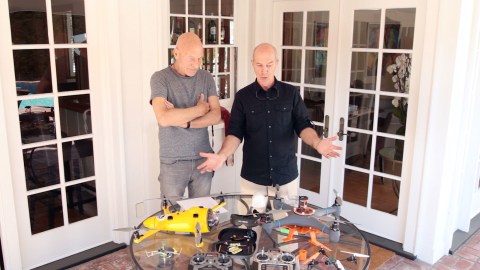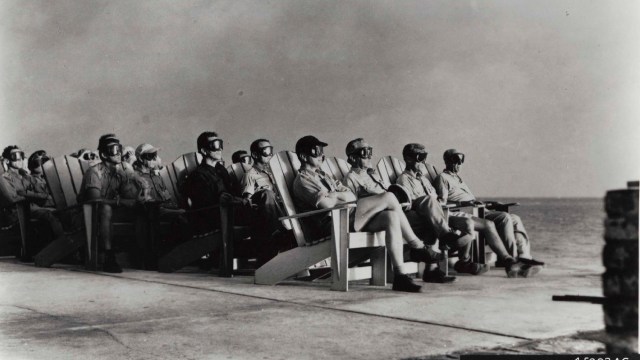Why Would Researchers Build a Drone that Collects Whale Snot?

“Save the whales” is a tired slogan many people have heard before. Overused, but undervalued — much in the same way the imagery of a polar bear set adrift on a piece of ice is for climate change. Iain Kerr, CEO of the Ocean Alliance is starting to think we should change it to something more accurate, like, “Saved by the whales.”
“You know about the old canary in the coal mines?” he asks me. “If the canary dies, well, get the heck out of the mine. Well, if the whales start dying…”
The ocean is a big part of the world we live in, and within this world are the whales, 79 different species across all oceans. They are, Kerr explains, living barometers that tell us what’s going on in the other 71 percent of the world, which is why Ocean Alliance’s development of the Snotbot is so huge. This innovative use of drone technology allows scientists to not only pack light, but also gather data without harassing the whales.
The Snotbot allows researchers to collect the “snot” from a whale’s blow. The information revealed from this sample will help humans to understand the health of not just whales, but also our entire world. The only catch is the Snotbot needs funding to get off the ground, if you will. Patrick Stewart is already on board, starring in a video talking about the project on Kickstarter. But with only 20 days to go the project is still far from funding. Maybe you can help.
I had the opportunity to speak with Kerr about the Snotbot, and the bigger idea behind this project.
First, how powerful is a discharge from a whales blowhole?
So, humans probably exhale from three to 10 miles an hour, OK? You gotta remember there’s 79 different species of whales; you get an exhalation rate from 20 to more than 65 miles an hour.
So, if you’ve ever seen that show, something like CSI? They say, “Oh let’s just get a few of the epithelial cells in your mouth.” They’re very good for DNA and that’s why they’re doing it.
There’s a lot of stuff we know we’re going to get: We know we’re going to get DNA; we know we’re going to get viruses; we know we’re going to get bacteria; and the exciting one — sort of the lottery win — is the stress hormones. Can we tell for the first time what human activities stress whales and what human activities don’t?
Because most animals hide their status, because they don’t want a predator to see, oh, I’m pregnant or I’m weak or whatever. So, we’re going to have to collect quite a large dataset, because hormones are complicated. The whale could have just eaten a bad squid and have a tummy ache. And I’m like, “Oh yeah, look at that.” So, the stress hormones is of one of the exciting ones.
The other exciting one is what we don’t know. Some of the best science in humanity has been scientists finding things that they weren’t looking for or they didn’t know it was there.
What kind of impact will this new way of sampling have on future research?
So, think of this: With drones with a video uplink, you could have maybe 10 of the top whale biologists on this one species — one’s in Miami; one’s in Papua New Guinea; one’s in France; and one’s in San Francisco — all on this one call, observing the behavior of this one animal. It’s like, can I join a conference call in 20 minutes? Yes. How much does that cost me? Nothing.
Why does the world need the Snotbot?
We live on planet ocean; we don’t live on planet Earth, and you can be a denier if you want, but the oceans have really become our toilet. So, we need every bit of data we can get. One way to do this is to make the data-collection process easier and more affordable, and I’m even hoping that we might be able to engage people with the data analysis. Put all the data up online and they can help analyze the data. Engage people in helping solve humanity’s problems, or engage a larger cross-section.
What kind of data will the whales reveal about our world?
The reality is the other mammal that’s at the top of the ocean’s food chain that can be found in all oceans are whales. So, if you’re looking for barometers of ocean health or if you’re looking for an indicator species that particularly relates to humanity, it’s probably whales. I’ll be a little corny here — it’s late in the day on Friday — but you know maybe we could change the slogan from, “Save the whales,” to, “Saved by the whales.”
You know about the old canary in the coal mines? If the canary dies well, oh, get the heck out of the mine. Well, if the whales start dying…
If you’re interested in funding the project or maybe want more information about the Snotbot, check out Ocean Alliance’s Kickstarter page. This interview has been edited.





